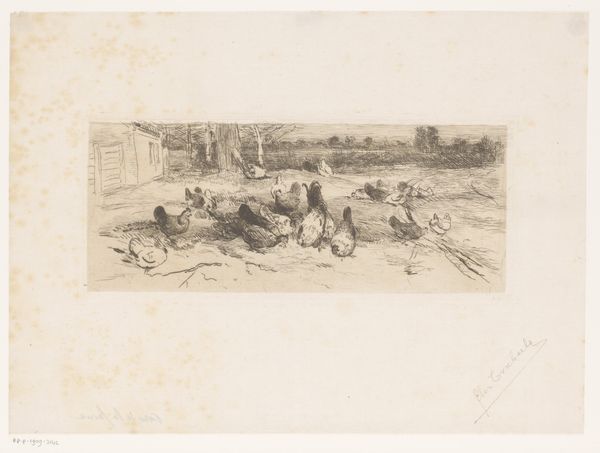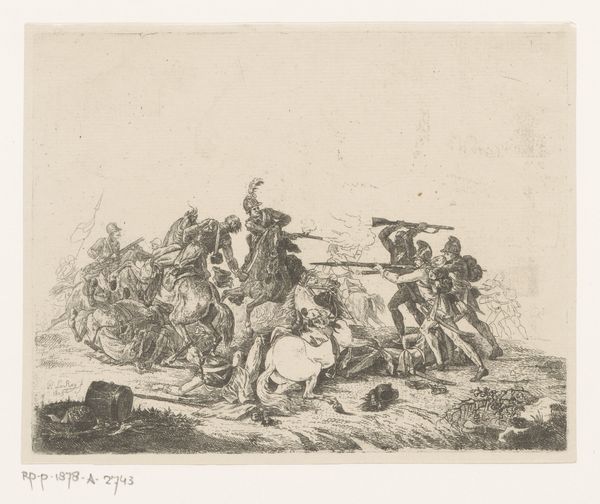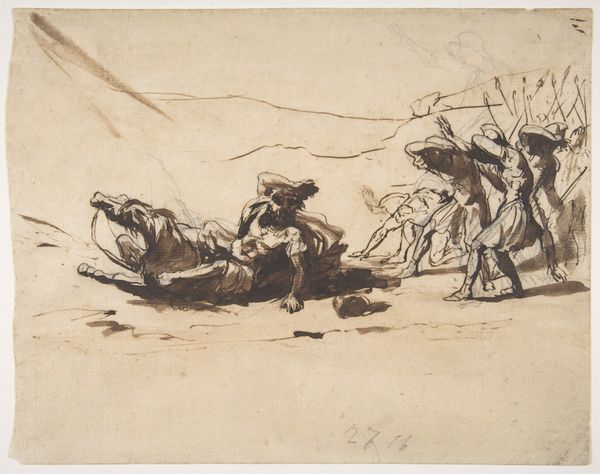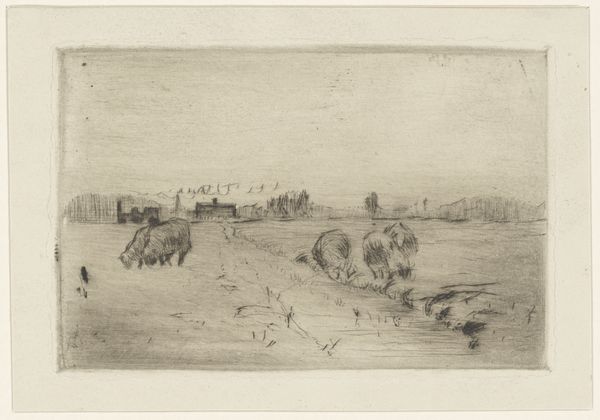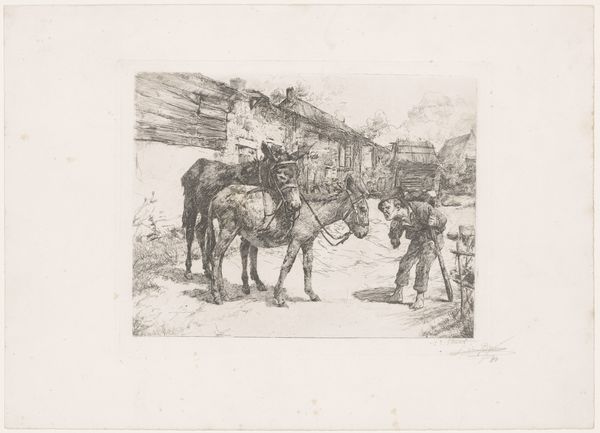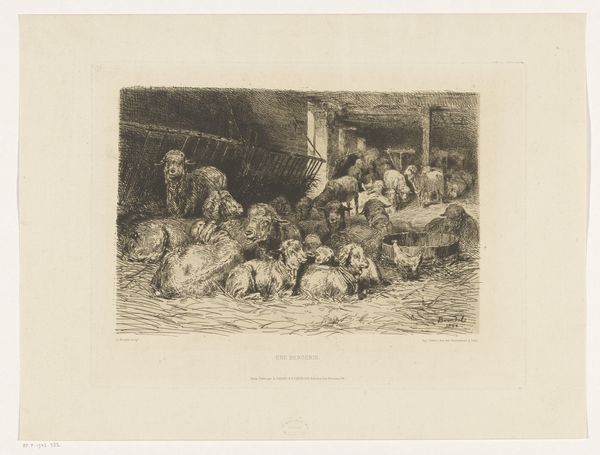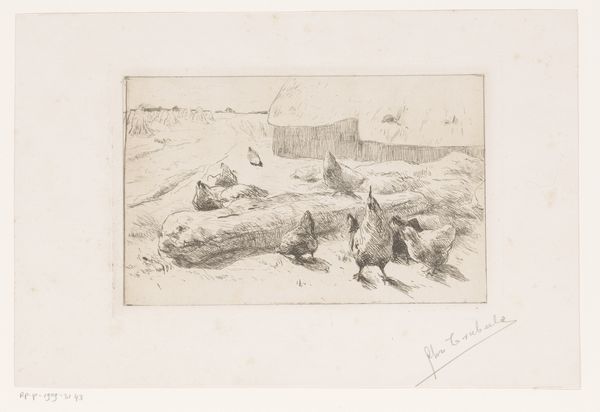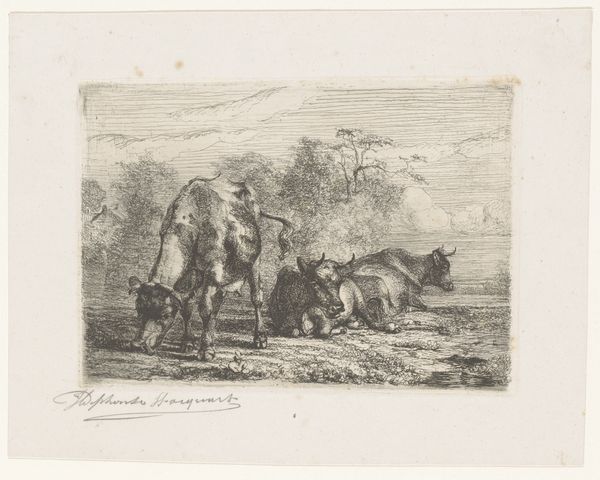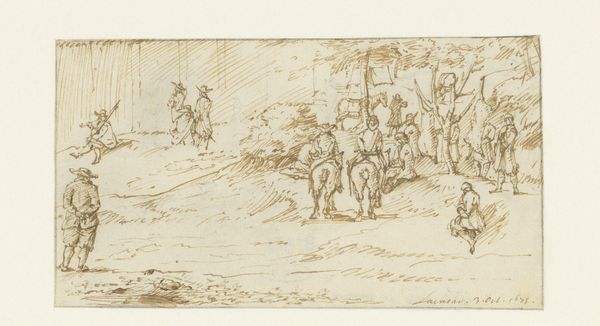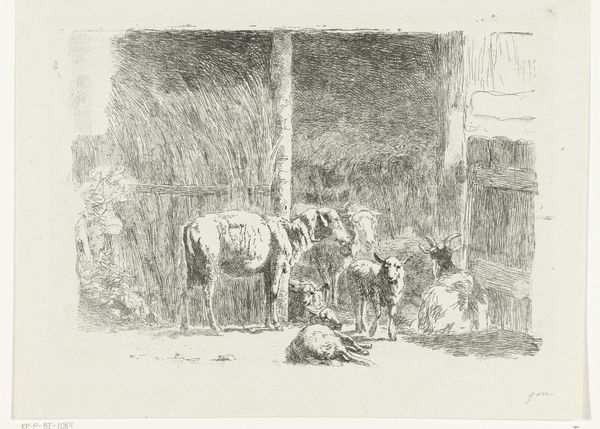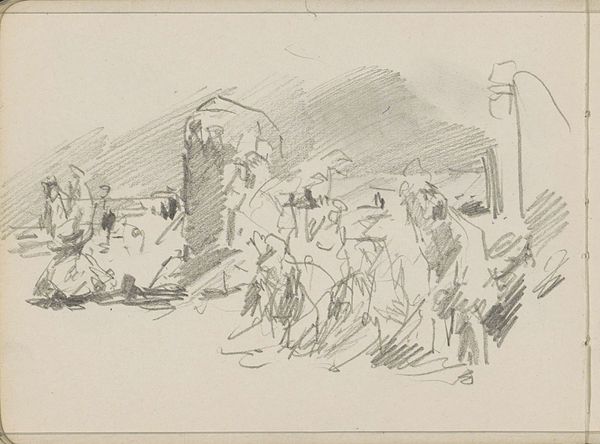
drawing, etching
#
drawing
#
etching
#
landscape
#
etching
#
pencil drawing
#
line
#
genre-painting
#
realism
Dimensions: height 193 mm, width 315 mm
Copyright: Rijks Museum: Open Domain
Curator: What a beautifully rendered scene! I'm immediately drawn to the dynamism of the lines, especially in how they convey the texture of the animals’ hides. Editor: Indeed. Let me introduce this piece. We’re looking at an etching titled "Wagens bespannen met ossen en muildieren," which translates to "Wagons drawn by oxen and mules." It's attributed to Armand Heins and likely created between 1866 and 1910. Curator: The medium itself, etching, feels significant. The lines feel deliberate, etched with purpose—perhaps reflecting the deliberate nature of labour within a specific societal context. I can't help but think of the relationship between humans and animals as commodities during this period. Editor: It speaks to the rural economy and infrastructure of the time, certainly. The genre scene depicted shows a workaday setting and presents fascinating social narratives depending on the location. The oxen and mules are valuable assets, literally driving the movement of goods and, therefore, shaping economic possibilities. Curator: The artist seems so focused on the specifics. Look at how each animal is uniquely portrayed – their forms, the turn of their heads, even the shadows cast on their bodies. The composition feels strategically arranged to convey an impression of everyday labor. But is it romanticizing it, or honestly portraying a form of exploitation? The distinction could come from deeper research into Heins's other artworks, particularly within specific exhibitions, markets and communities. Editor: It is hard to be certain, and his biography and context remain obscure to us today. Perhaps the politics of representation at play here speak more of a contemporary preoccupation, the urban artist seeking refuge in the rural past. Genre painting had that power in those decades to look backward and forwards simultaneously. It might be as much about constructing a visual history for popular audiences. Curator: Ultimately, the tension lies in the details: how the artist chose to portray not just the subject, but also the very act of making, what techniques and workshops made it happen, and what message this process embeds within the overall artistic output. Editor: And that impact relies upon where this image circulated, which books, which portfolios and art markets, which then gave audiences an experience that informs the history as we interpret it now. Food for thought.
Comments
No comments
Be the first to comment and join the conversation on the ultimate creative platform.
